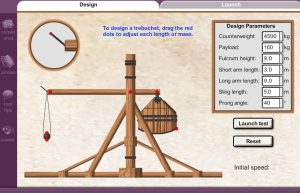
Let's discuss STEM and its relationship to engineering.STEM is an acronym for Science, Technology, Engineering and Math education. Across the country, K-12 STEM programs are increasing in number as more emphasis is placed on preparing students for careers in these fields.STEM is implemented as an interdisciplinary and applied approach coupled with hands-on, problem-based learning. Engineering design is not just applied science. It has a different purpose and product than scientific inquiry, albeit a similar process.
Engineering provides a context in which students can test their developing scientific knowledge and apply it to practical problems. If not included explicitly in science curricula, students may not get the opportunity to explore how science concepts can inform the design of solutions to everyday problems.
对熟练工人的需求在干细胞领域是closely linked to global competitiveness. The National Science Foundation states, “To succeed in this new information-based and highly technological society, students need to develop their capabilities in STEM to levels much beyond what was considered acceptable in the past.”
Did you know Gizmos brings it all together with lessons that support engineering design process and related concepts?
An Engineering Gizmo: Trebuchet
Gizmos are a great way to engage students in the Science and Engineering Practices.Trebuchetis a challenging and fun engineering Gizmo that lets students apply scientific and mathematical knowledge to the engineering problem of devising a siege engine designed to hurl projectiles across large distances. In medieval times, trebuchets were used to devastating effect to demolish castles and fortified city walls.
In one scenario, it is 1304 and we are in the army of King Edward I of England. We have been ordered to attack Stirling Castle in England and knock down the wall. This allows us to look at a problem and a situation like engineers. We need to define the problem and the criteria and constraints for acceptable solutions, generate multiple solutions, build and test prototypes, and optimize the ultimate solution.
We have a trebuchet, but we need to work within the constraints — location, distance and height, materials available, and how much force is needed to break the wall — to be able to successfully knock down the wall. This is a great Gizmo to do both in small groups and individually.
Gizmos with an Engineering Focus
Trebuchet is just one of several Gizmos that feature an engineering focus. Check out the following Gizmos to bring more engineering design into your classroom.
Elementary School:
- Circuit Builder– Activity B – Series Circuits and Activity C – Parallel Circuits – Extend Your Thinking (Define Problems)
- Ants on a Slant– Activity A – Inclined Plane: pros and cons and Activity B – Work, work, work (Define the Problem, Generating and Evaluating Multiple Solutions, Building and Testing Prototypes, and Optimizing a Solution) TG – Follow-up activity: Balloon racers on inclined planes (Generating and Evaluating Multiple Solutions, Building and Testing Prototypes, and Optimizing a Solution)
- Levers– Activity C – Second- and Third- class levers – Challenge (Define the Problem, Generating and Evaluating Multiple Solutions, Building and Testing Prototypes, and Optimizing a Solution)
Middle School:
- Sled Wars– Activity C – Sled Wars! (Define the Problem, Generating and Evaluating Multiple Solutions, Building and Testing Prototypes) TG – Follow-Up Activity – More sled battles! (Building and Testing Prototypes and Optimizing a Solution)
- Pendulum Clock– Activity C – Calibrate the Clock! (Building and Testing Prototypes and Optimizing a Solution)
- Digestive System– Activity A – Build a digestive system (Define the Problem, Generating and Evaluating Multiple Solutions, Building and Testing Prototypes, and Optimizing a Solution) – Activity C – Absorption (Generating and Evaluating Multiple Solutions, Building and Testing Prototypes, and Optimizing a Solution)
High School:
- Plants and Snails– Activity B Challenge – Interdependence (Define the Problem, Generating and Evaluating Multiple Solutions, Building and Testing Prototypes, and Optimizing a Solution)
- Germination– Activity C – Some like it hot (Define the Problem, Generating and Evaluating Multiple Solutions, Building and Testing Prototypes, and Optimizing a Solution)
- Homeostasis– Activity B – Control your body temperature (Define the Problem, Generating and Evaluating Multiple Solutions, and Optimizing a Solution)
- Trebuchet– Activity A – Trebuchet design (Define the Problem, Generating and Evaluating Multiple Solutions, Building and Testing Prototypes) Activity B – Attack (Define the Problem, Generating and Evaluating Multiple Solutions, Building and Testing Prototypes, and Optimizing a Solution)
- Atwood Machine– Activity B – Force and Acceleration (Define the Problem, Generating and Evaluating Multiple Solutions, Building and Testing Prototypes, and Optimizing a Solution)
Pass it on!
